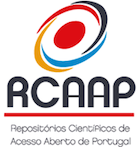Hiperactividade plaquetária e hipofunção do sistema fibrinolítico na hipertensão arterial
Keywords:
arterial hypertension, platelet aggregation, fibrinolysis, cerebrovascular accident, myocardial infarctionAbstract
Several reasons have been pointed out to explain the relative failure of antihypertensive therapy in the prevention of the atherosclerotic complications of high blood pressure. The decrease of blood pressure has proved to reduce the hypertensive ( mechanical) complications of hypertension but it did not prevent myocardial infarction, an atheros clerotic complication, as expected by the results of the epidemiological studies. ln addition, it is not clear the real effect of antihypertensive therapy in the prevention of ischemic cerebrovascular accidents. Both situations are the result of thrombotic events and are straightly related to endothelial function, platelet aggregation, fibrinolytic system and coagulation.
ln the last ten years it was demonstrated that increased platelet aggregation and decreased fibrinolytic activity are dysfunctions related to hypertension. They appear to be independent markers of hypertension and not a consequence of the increased blood pressure.
Blood pressure normalisation with diuretics and beta-blockers, the main therapies used in the big trials, failed to normalise those dysfunctions, unaffecting the action of factors with a crucial role in atherogenesis and thrombogenesis.
The introduction of new antihypertensive therapies, which decrease platelet aggregation and in crease fibrinolytic activity, permit us to question if with their utilisation will it be possible to prevent the atherosclerotic complications of arterial hypertension.
Downloads
References
l. Kaplan. Clinicai Hypertension 1986; 4'h Edition: 136
Collins R. Peto R 1facmahon S, er al. Blood pressure, stroke and coronary heal1 diseasc. Part 2. Short-term reductions in blo od pressure: overview of randomized drug triais in their epi demiological context. Lancet 1990; 335: 827-838.
Russel RW. How does blood pressure causes stroke' Lancet 1975: 2:1283-1285.
Dustan HP. Athcrosclerosis complicating chronic hypertension.
Circulation 1984; 50: 871-879
'i. Franco AS, Ferro], Monteiro], Paiva MF, Mota E, Nogueira da Costa
J. Acidente vascular cerebral e hipertensão: aspectos cardioló gicos e neurológicos. Rev P011 Cardiol 1989; 8(5):377-83.
ô. Franco AS. Freitas A, Monteiro], Ferreira D, Machado AP, Noguei ra JB. Mota F. ,r,,,;ogucira da Costa J. Accidente vascular cere bral como manifestación de enfermedad sistémica. Valoraci
ón de la cardiopatia suhyaccnte. Rev Lat Cardiol 1987; 8(5)32'i-33í
Santos 'VI. Gonçalves F. tóhrega.J, Kascimento L. Ravara L. [nsu ficiência cardíaca num serviço de 'Vledicina Interna: Fstudo retrospectivo. Acta Med Port 1991: li série. vol •Í, nº 1: 43-49.
Saa·edra.JA. Porque é que o tratamento da hipe11ensào nào evita a doença coronária' in: lsquémia. Abordagem multidiscipli nar da fisiopatologia :1 clínica. Editores: Carlos Ribeiro, Luís Silva Carvalho. J Braz :ogueira. Keo Farmacêutica, Lisboa, 1992.
Zanchetti A. I las antihypertensive trcatment prevented vascular disease or vascular events. J Cardiovasc Pharmacol 1992: 19 (suppl 3) 1-5.
O. Cole FM. Yates PO. Comparative incidence of cerehrovascular lcsions in nonnotensive and hype1tensive patients. Neurolo gy 1%8: 18: 2'i'i-2'i9.
Fisher CM. Cerebral milia,y aneurysms in hypertension. Am J Pathol 1972: 66: 313-24.
Johanssen BB. Vascular mechanisms in hypertensive cerebrovascular disease. J Cardiovasc Pharmacol 1992: 19(suppl3): 11-15.
Falk E. Unstable angina with fatal outcome: Dynamic coronary thrombosis leading to infarction and/or sudden death: autopsy evidence of recurrent mural thrombosis with periferal embolization culminating in total vascular occlusion. Circulation 1985; 71: 699-708.
Bini A, Fenoglio JJ, Mesa-Tejada R, Kudryk B, Kaplan KL. Identification and distribution offibrinogen, fibrin and fibrin(ogen) degradation products in atherosclerosis 1989: 9: 109-121.
Ross R. The pathogenesis of atherosclerosis: a perspective for the 1990s. Nature 1993; 362: 801-809.
Harker LA, Ritchie JL. The role of platelets in acute vascular events. Circulation 1980; 62:(suppl V): V13-Vl8.
Nyrop M, Zweifler AJ. Editorial revew: Platelet aggregation in hypertension and the effects of antihypertensive therapy. J Hypertens 1988; 6(4): 263-269.
Jslim IF, Beevers DG, Bareford D. The effect of antihypertensive drugs on in vivo platelet activity in essencial hypertension. J Hypertens 1992; 10: 379- 383
Zannad F. Bray-Desboscs L, Ghawi R, Donner ;, Thibout E. Stoltz JF. Effects of lisinopril and hydrochlorothiazide on platelet function and blood rheology in essencial hypcrtension: A randomly allocated double-blind study. J Hypertens 1993: 11: 559-565.
Uehara S, Handa 11, Hirayama A. Effects of the calcium antagonist nifedipine on thromboxane B2 level and plateler aggregation in hypertensive patients. Drug Res 1986: 36 (II): 1687-1689.
Osmialowska Z, Nartowicz-Stoniewzka M, Stominski JM, Krupa - Wojdechowsb B. Effect of nifedipine monotherapy on platelet aggregation in patients with untreated essential hyper tension. Eur) Clin Pharmacol 1990; 39: 403-404.
Additional Files
Published
How to Cite
Issue
Section
License
Copyright (c) 1994 Internal Medicine

This work is licensed under a Creative Commons Attribution 4.0 International License.
Copyright (c) 2023 Medicina Interna





